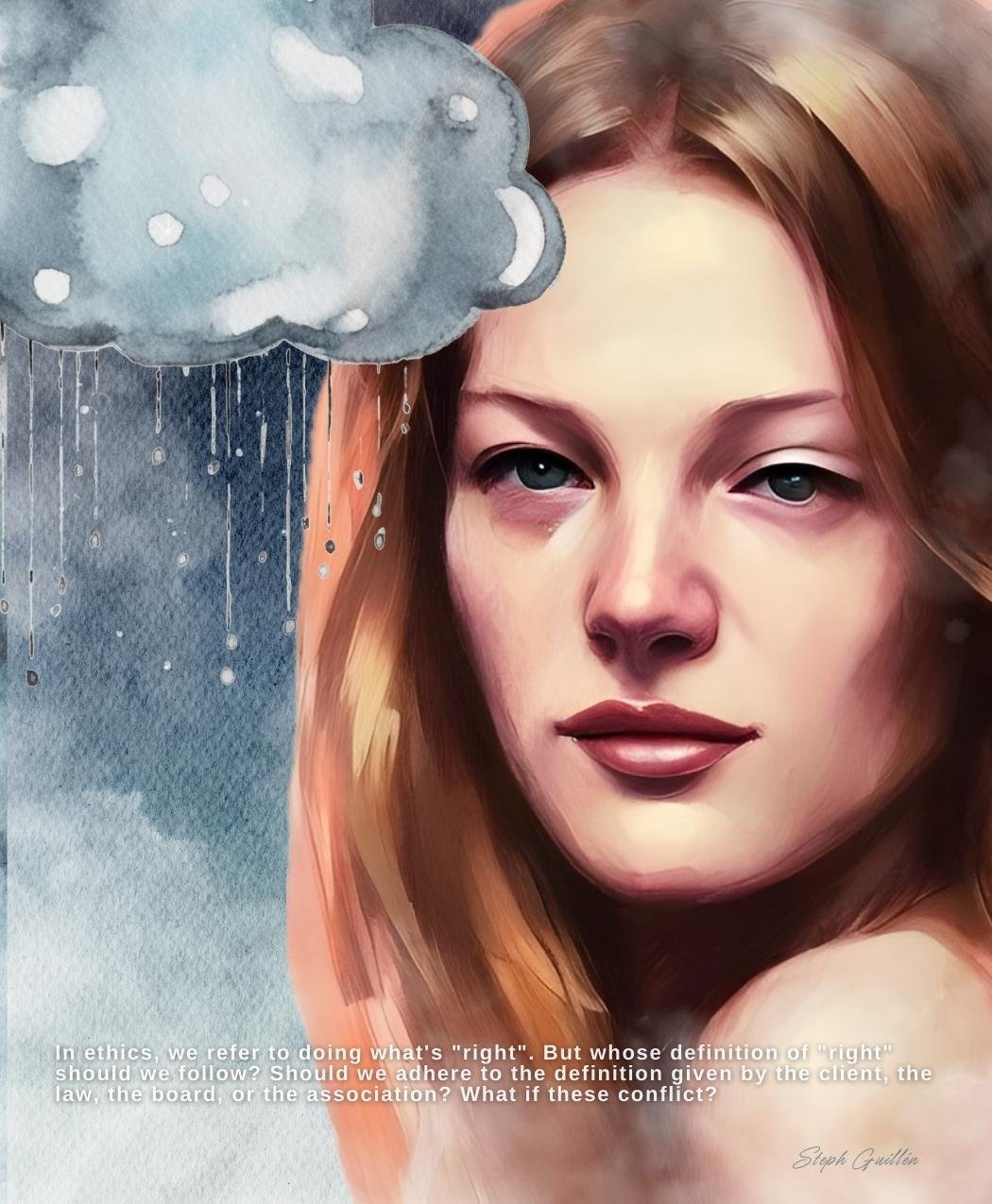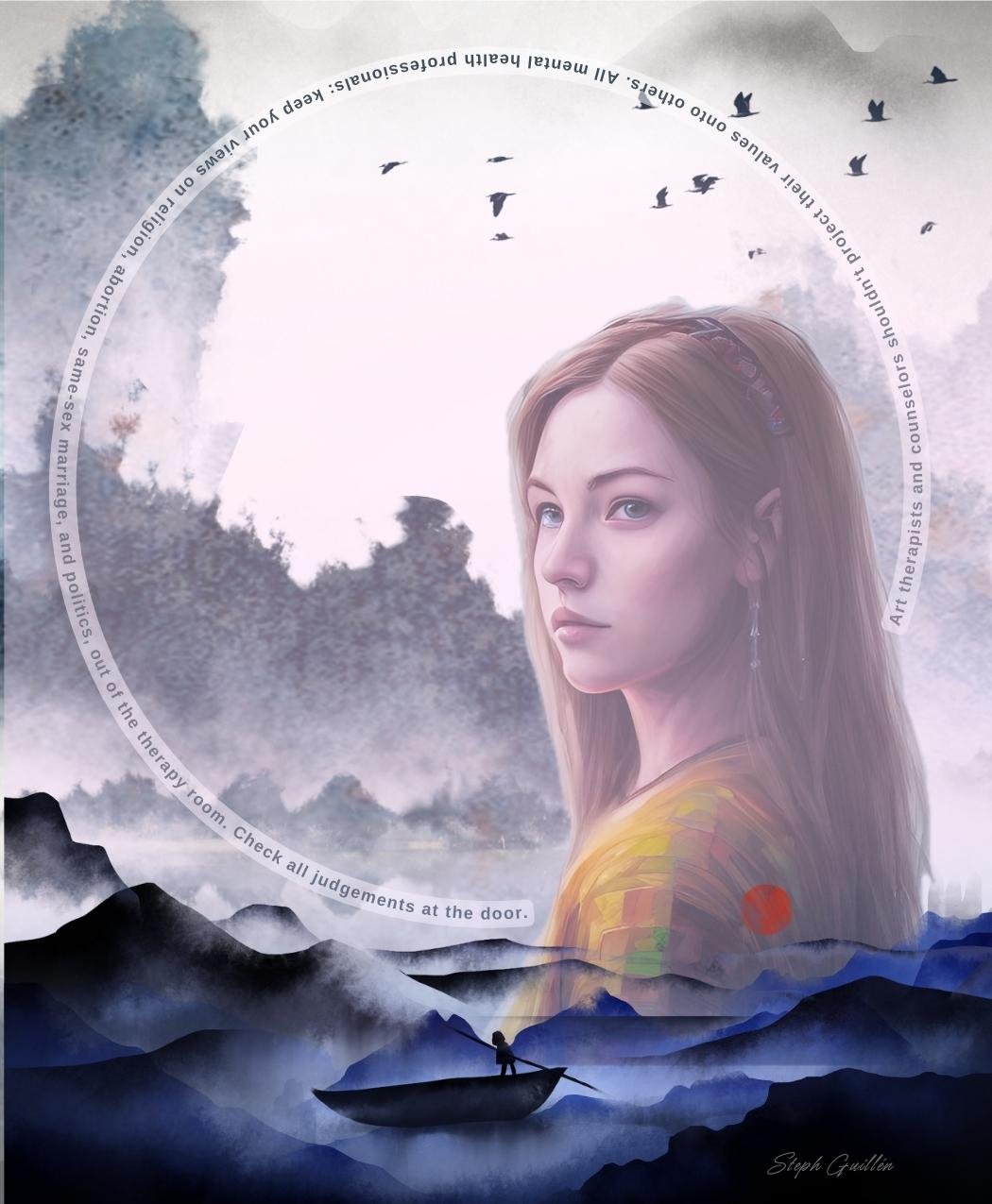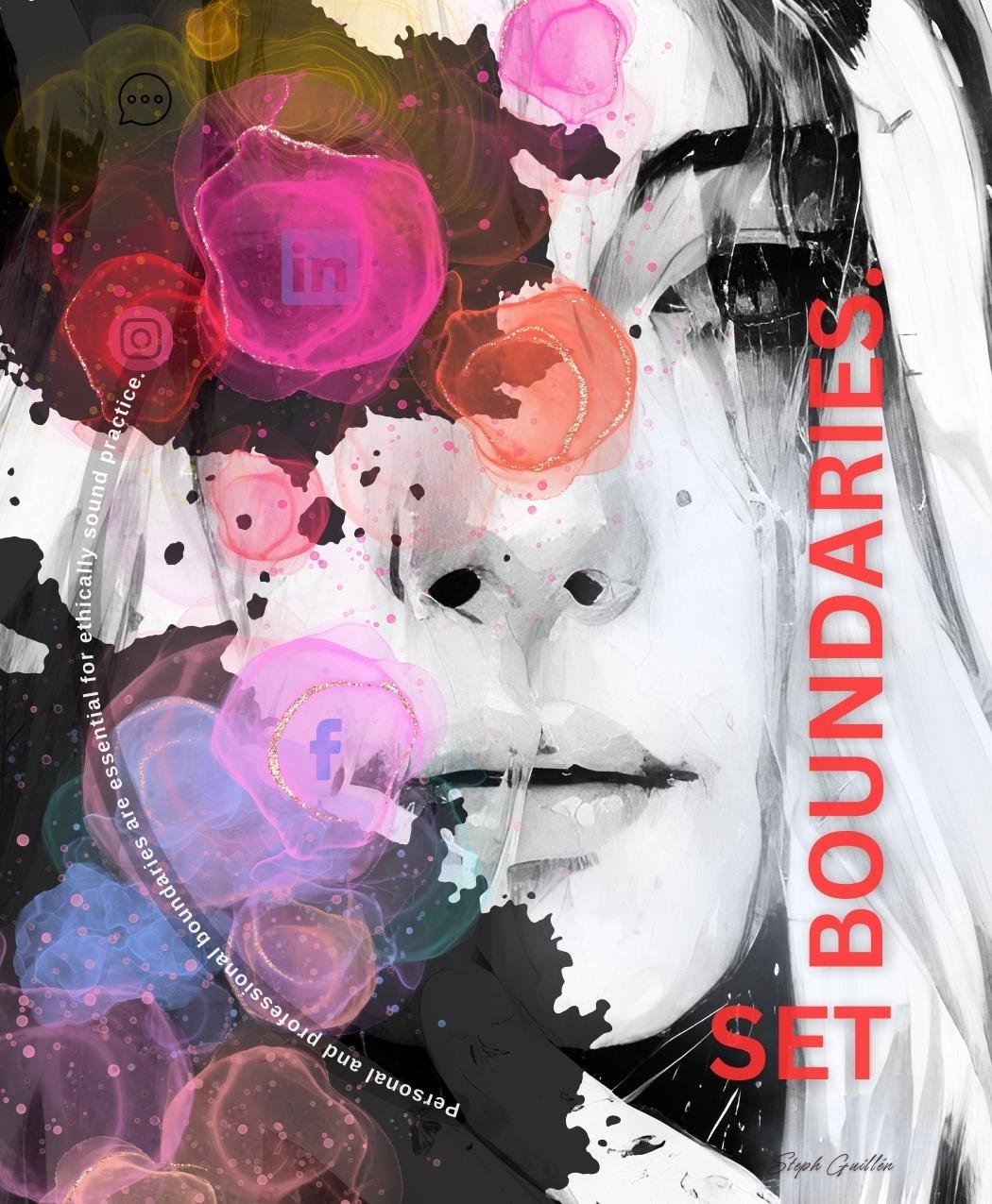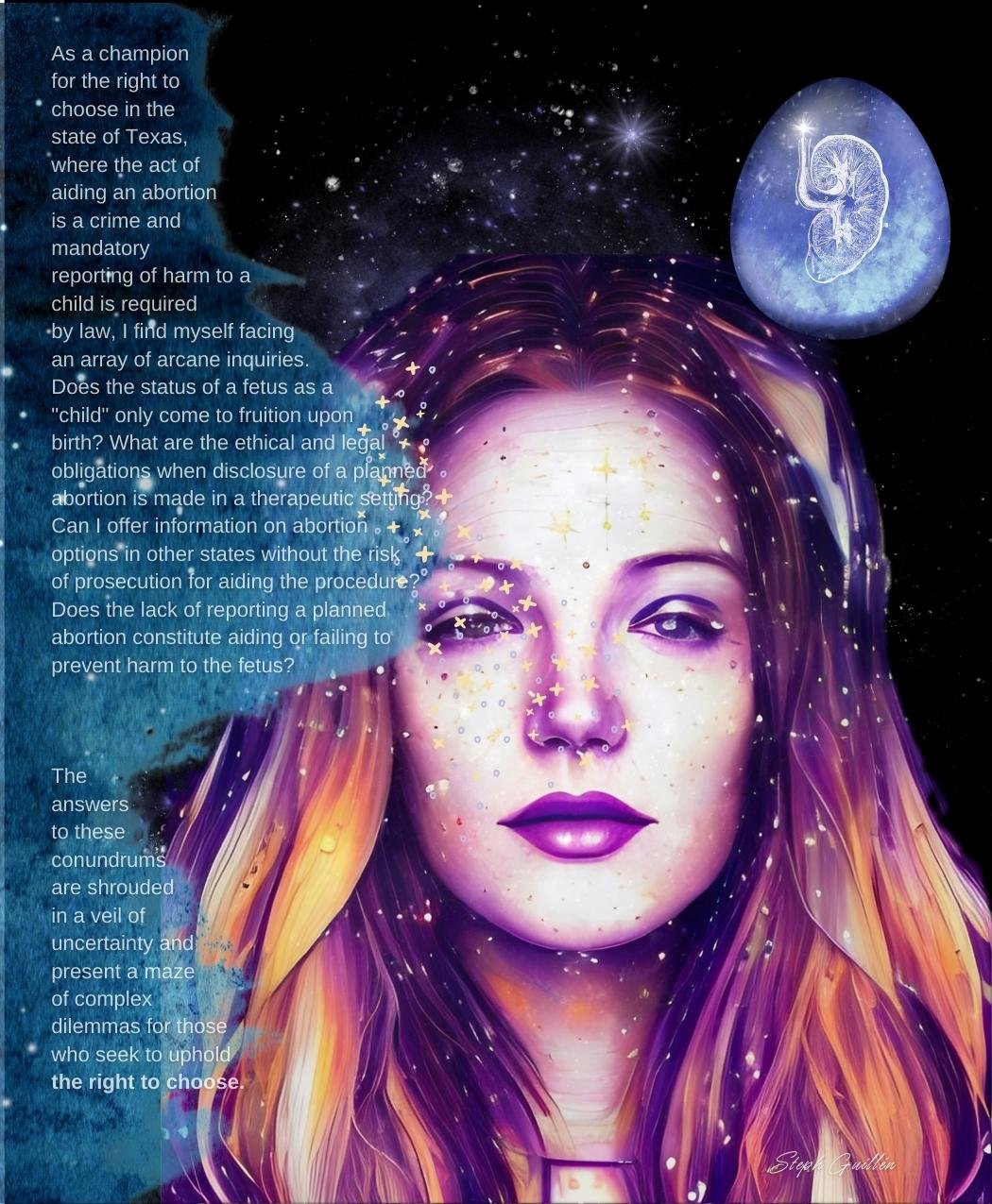Techniques, Applications, & Ethics
Regarding my understanding of art therapy and its application, my greatest strengths are curiosity, authenticity, and intuition. These strengths will serve me well as I navigate ethical dilemmas, build rapport and a healthy therapeutic alliance, and create a safe and sacred container that promotes positive change. Additionally, I understand the importance of personal growth and self-care and how paramount it is for me to continuously work on myself throughout my journey as an art therapist and counselor.
ARTIFACT 1:
DO ART Model, Psychopharmacology Poster, Psychopathology Project, and Zine
My favorite model for navigating ethics in art therapy and counseling is the DO ART model. It stands for Dilemma, Options/Outcomes, Assistance, Responsibility, and Take Action. This model provides a solid framework from which to operate, making the ethical process much less intimidating. Additionally, the documentation throughout the process offers a thick layer of protection should a final decision ever be questioned. While there are no easy answers in the face of an ethical dilemma, the DO ART model helps to solidify the options and arrive at a decision that feels more ethically sound and holds the least potential for harm.
While at Texas Children’s Hospital as an art therapy and counseling practicum intern, I discovered a need for art therapy groups for hospital staff. Hospital staff in the critical care, acute care, and cancer units where I work are regularly witness to patient suffering and death. There was no existing art therapy program for medical professionals and staff, so I led an art therapy group one week for child life department staff and it was well received. I proposed creating a regular art therapy group open to all hospital staff and doing a study to track and possibly publish the benefits. I got approval and we’re now preparing to submit the proposed study to the Institutional Review Board (IRB) for approval. I plan to lead the group beginning in January 2025.
Because of what I’ve witnessed during my work at Texas Children’s Hospital thus far, I decided to research vicarious trauma in healthcare professionals and potential pharmaceutical and art therapy interventions. This is my poster project based on that research.
Don’t forget the child,
once lost in the grip of hurt.
False disorder penned,
with deadly ink of ruin.
Remember always,
the humanity inside,
a diagnosis.
The ethical explorations zine project was quite the journey. I began the class feeling like ethics was a scary and intimidating topic and an aspect of art therapy and counseling that I’d rather not think about. It wasn’t that ethics weren’t important to me; on the contrary, they felt of paramount concern. However, I didn’t want to think about them due to all the gray areas, fear of getting into trouble, and not understanding all the rules, regulations, and laws. I felt like I would need to be both a lawyer and a counselor to feel secure about what to do and how to operate from an ethically and legally sound position. However, exploring the various ethics topics creatively through zine imagery and journaling helped me gain fuller awareness, insight, and understanding of ethics.
There were a few zine prompts that felt especially meaningful for me. Specifically, the informed consent, boundaries, and ethical dilemma prompts were most impactful. The informed consent prompt made me think more deeply than I had before about the importance of what to include in informed consent, the importance of going over it in person with the client, and the value in continuously revisiting it with them periodically along the journey. It helped me become more aware of its importance for the therapist and the client. The boundaries prompt opened up a whole new topic of contemplation for me regarding social media and multiple relationships. Finally, the ethical dilemma prompt got me thinking about all the questions that arise in situations with unclear legal answers.












ARTIFACT 2:
Group of Artwork
Material considerations are so important in art therapy, and to me, this means approaching therapy with multicultural awareness and from a trauma-informed lens. Each media offers advantages and disadvantages, and careful consideration is required regarding what is appropriate or inappropriate for each client based on their unique circumstances and background. When in doubt about a client’s trauma history, always err on the side of caution.
Offer a variety of material/media options.
Sexual trauma history is better paired with materials that allow for more control rather than fluid media.
The Expressive Therapies Continuum (ETC) is another important component of material choice.
Material safety and sanitation are important. The choice of materials would be different when working with an incarcerated individual than with a cancer patient.

More Control - Pen

More Control - Pen/Colored Pencil

More Control - Pen/Markers

Medium Control - Pastels

Medium Control - Pastels

Medium Control - Pastels/Paint

Less Control - Pigment/Glitter/Glue

Less Control - Watercolor

Less Control - Watercolor
ARTIFACT 3:
Tending the Image Artwork and Assessment Philosophy
I love the image-tending process of art therapy through the aesthetic approach. This form of assessment moves away from objectifying the image and allows for aesthetic response through a variety of levels of awareness and contemplation. It lends respect to the image not as an owned object but rather as an entity with autonomy and as a third party in the sacred space.
Colors Bodyscape:
I see blue wavy lines. I feel curious. I imagine a journey.
My image poem…
“The crow is witness,
Inner mystery,
The life in Yara.”
Heart Connection:
I see a red sun. I feel a sense of renewal. I imagine the birth of a new star, hugged and held by an asteroid belt.
I sense in my body radiating energy. I feel joy. I imagine the expansion of life, dotted by magic.
What does the image have to say?
“The cosmos has doors. Energy fields. Life. Breathe. Love. Breathe in love. Radiate life. So much beyond the human senses. Magic. Energy is everything. Energy is conscious, is magic, is life. Dimensions. Breathe in life. Breathe in joy. Breathe in love. Play. Laugh. Live. Don’t lose your sense of wonder and curiosity.”
Wisdom School:
I see white spirals of light. I feel connection and peace. I imagine a journey to the cosmos, the inner unconscious, and the energy realm.
My image poem…
“She who goes beyond,
To other realms of knowing,
Connects to the Source.”

"Colors Bodyscape" - 18 x 24 Soft Pastels, Oil Pastels, Ink

"Heart Connection" - 18 x 24 Soft Pastels

"Wisdom School" - 18 x 24 Soft Pastels
Learning about assessments was a critical element to my journey thus far. I’ve discovered how they can be both helpful and harmful. I’ve also learned they should be treated with caution and respect. My assessment philosophy is to take a middle ground approach, using art-based assessments more loosely as directives except where formal assessments are necessary.



















